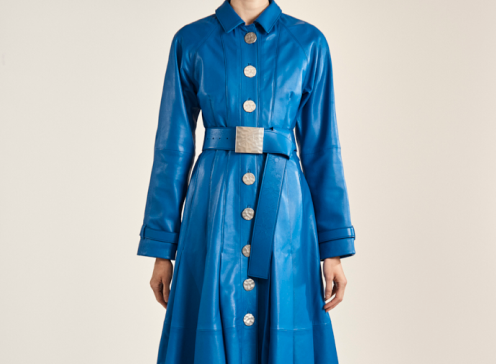Whether worn on our bodies or embedded in them, silk has a history that leads to how we’re using it today.
Were you to suffer a wound circa 175 CE, your doctor might have applied dry lint to it, dabbed it with a sponge soaked in vinegar, cauterized the wound with a red-hot iron, then cleaned it again with that vinegar-soaked sponge before stitching you with silk sutures. It’s not that different than what your physician might do today: Staunch the bleeding with gauze, disinfect the wound, and stitch it up. But while we’ve moved on from lint, vinegar, and red-hot irons (thankfully), one ingredient hasn’t changed significantly since the days of the gladiators: silk.
Biologically speaking, silk begins with Bombyx mori, the silkworm that munches mulberry leaves for energy. Once the larva enters the pupal phase, it uses its salivary glands to spin a continuous silk fiber around itself. The result is a cocoon made of a single strand of silk the length of up to eight football fields, which is eventually woven or knitted into any of the silk products you probably think of when asked to picture silk—ties, dresses, scarves, tapestries.
But the cultural history of silk and the ways it transformed our world starts in China, home to the mulberry silkworm, where the first silk fabric was produced around 2700 BCE. Its production was so guarded that the penalty for exporting the Bombyx mori was death. But exported it was, eventually leading to the formation of the Silk Road, which wasn’t a single road but a network of routes crisscrossing Europe, the Middle East, Central Asia, India, and the Far East that began as a route for trading silk. It flourished from the Middle Ages well into the 19th century; the wares traversed over it expanded beyond silk and other textiles to foods, gems, and art. More important, the Silk Road enabled cultural exchanges that changed the world in ways that are difficult to overstate. Religion, medicine, music, agricultural irrigation: All these spread from land to land thanks to silk.
The silk story shaped our culture in ways more pedestrian but nonetheless significant, too. It lined the coat Abraham Lincoln wore to the theater on April 14, 1865; it formed silent, indelible escape maps smuggled into World War II POW camps. It’s been flossing American teeth for 200 years, its short wartime supply led to the invention of nylon, and its track record in solving bad hair days is legion.
Availability explains part of silk’s global reach. The fiber itself explains the rest. It’s durable, breathable, and beautiful; it protects the wearer from frigid cold, blistering sun, and mosquito bites; it takes dye easily, and its only ingredient can be cultivated in a space as small as a closet. More to the point, it’s strong. Skin, tendon, cartilage, bone; aluminum, brass, even some forms of steel: None of them match the tensile strength of silk, one of the strongest materials found in the natural world.
Perhaps it was this strength that made doctors of antiquity turn to silk as a healing tool; perhaps its association with royalty and luxury led them to imbue the silk story with near-mythical qualities. Whatever the case, doctors in western India advised tying knotted silk around the upper arm to cure fevers, Gallic doctors of 4th century used spider silk as Band-Aids, and an article in an 1889 edition of Lancet medical journal suggested coupling arsenic with a silk scarf wrapped around the neck to treat sore throats. Medical minds of yore didn’t stop at the skin barrier, either: In addition to our ancient doctor wielding a red-hot iron in one hand and silk in another, silk was first used as a ligament replacement in 1907.
Ancient surgeons demonstrated one of our favorite things about silk—its biocompatibility, or its ability to work in harmony with the human body. That comes courtesy of silk’s molecular structure, which leads us to another key reason we love silk: its versatility. The way its proteins are structured means that silk can be configured thousands of different ways on a molecular level, yielding thousands of different results. Go back to silk fabric for a moment: It reflects your body heat, making it a good cool-weather choice, but its weight and heat-dissipating properties make it comfortable in warm weather, too. That innate versatility shows up on a microscopic level. Pair it with our team’s molecular expertise, and you have a substance that can transform the industrial world just as it has transformed our culture at large—but more on that in our look at Activated Silk, the liquid silk protein that we’ve made our life’s work.
